Arrangement of sockets for washing machine and dryer in a column
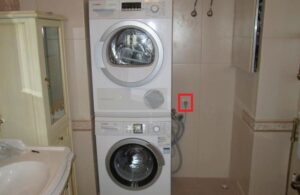 If the apartment has both a washing machine and a dryer, they are most often installed in a column, on top of each other. This method of placing equipment is very convenient. Firstly, space in the room is saved, and secondly, the appliances are nearby, and you can quickly transfer laundry from one drum to another.
If the apartment has both a washing machine and a dryer, they are most often installed in a column, on top of each other. This method of placing equipment is very convenient. Firstly, space in the room is saved, and secondly, the appliances are nearby, and you can quickly transfer laundry from one drum to another.
With such a placement of equipment, a number of nuances will have to be taken into account. For example, consider the height of installation of sockets for a washing machine and dryer in a column, and provide a place for connecting machines to communications. Let's look into the nuances.
Are we making outlets for the washer and dryer in the bathroom?
When installing devices in a column, special attention must be paid to their connection to the electrical network. It is imperative to provide a separate outlet for both the washing machine and the dryer. Otherwise, the point, when two units are turned on simultaneously, will operate at increased load.
If the washer and dryer are installed in the bathroom, it is better to purchase sockets with the maximum level of moisture protection.
Usually you have to install new sockets for washing machines. Therefore, even before installing the devices in the column, consider the location of the connection points to the electrical network. It is better that they are located away from the cabin, bathtub, washbasin and other “wet” objects. Then water will not get into them.
It is ideal to make sockets closer to the exit from the bathroom. This place is considered the most ventilated and safe. Of course, make sure that the machine’s network cables are long enough. It is prohibited to use an extension cord to connect washing and drying equipment to the network.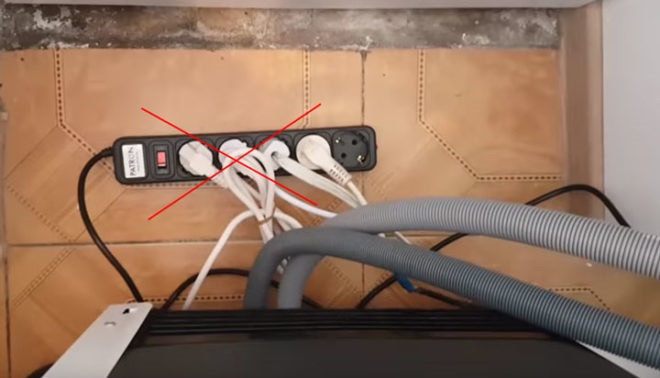
Sockets are placed on the wall, at a distance of at least 25 centimeters from the floor level. This is a basic safety requirement. The height can be greater, 40 or 60 cm, most importantly, not lower than the established minimum.
It is better not to “sculpt” the sockets too high - at a level of 180-200 cm from the floor level. It will be difficult for a housewife, especially a short one, to reach them if there is an urgent need to turn off the power to the appliances.
Once the placement plan is in your head, it is recommended to transfer it to paper. Draw a sketch, outlining how the wires will go from the panel to the sockets. This will help you calculate how much cable you will need to purchase.
It is necessary to think not only how many wires are needed, but also what their cross-section should be. Washing and drying equipment puts a heavy load on the network. The type of cable is determined based on the calculation of the power of the machines.
The power of the washer and dryer can be found in the instructions. Often such information is indicated on the device body. You should also “figure out” what other devices you will connect to the outlet. Based on these data, it is determined what the wire cross-section should be.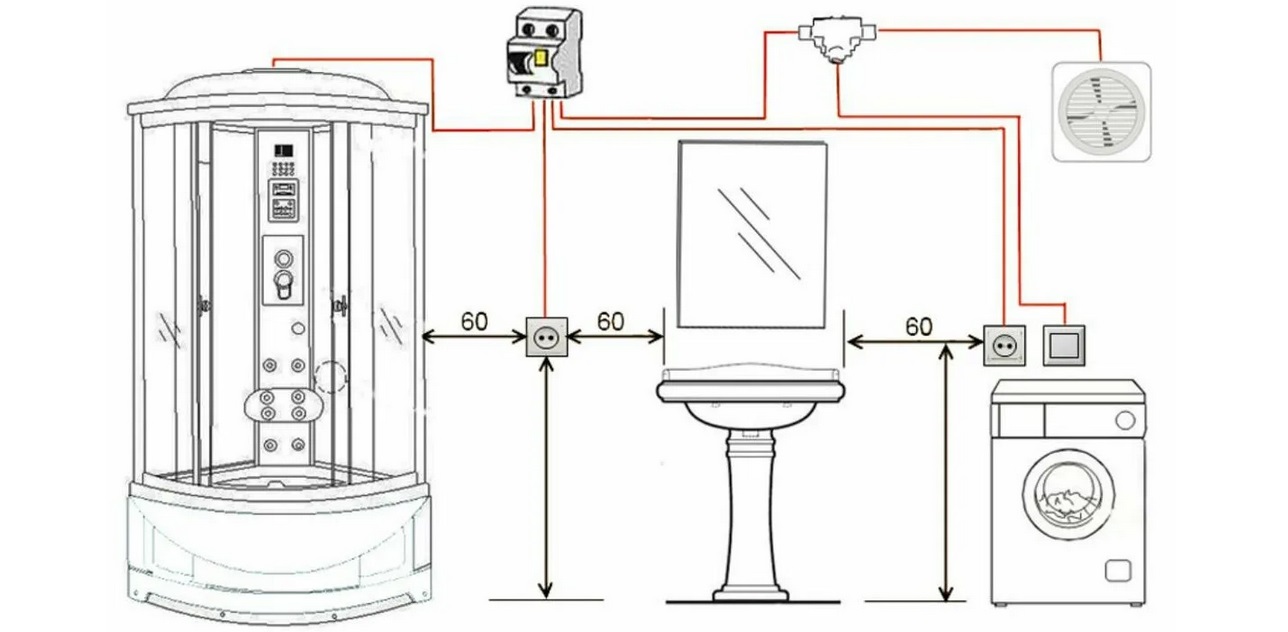
For example, a wire one and a half millimeters thick can easily withstand a load of 4.1 kW. This cable is suitable for both washing machines and dryers. However, experts recommend taking materials with reserve, so it is better to stick with a 2.5 mm thick wire.
Having found out what kind of cable is needed, you need to start planning the “route” of future wiring. It is important to follow several recommendations here:
- avoid “wet” areas (these are walls near the bathtub, shower, sink);
- do not plan to lay the cable along load-bearing walls - their surface is difficult to groove due to the reinforced mesh provided inside;
- the laying route should be the shortest - this will save on materials;
- the new wire should not intersect with other branches of the electrical network.
Care should be taken that the line is protected by a separate circuit breaker. This is necessary to protect equipment from power surges in the network. Experts recommend installing an RCD with a cut-off current of 10-16 Amps.
Before ditching the walls, draw lines on their surface in the places where the niche for the wires will pass.
The algorithm of actions when organizing new outlets will be as follows:
- mark the locations of the sockets on the wall;
- draw lines repeating the wiring route;
- insert the metal crown for the socket box into the hammer drill;
- drill two round holes for sockets;

- start cutting a niche for the wiring along pre-marked lines;
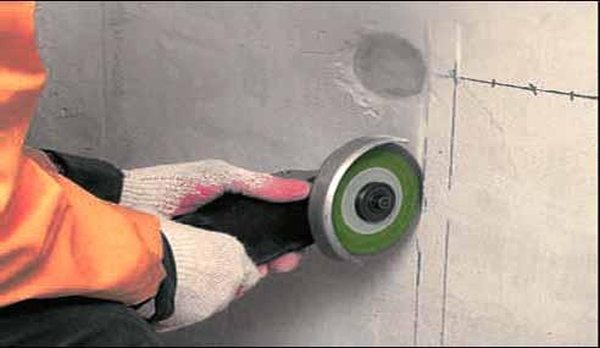
- install two separate RCDs in the panel going to the bathroom. Remember that the conclusions must first be de-energized;
- connect the wires to the RCD and start pulling them along the grooves made;
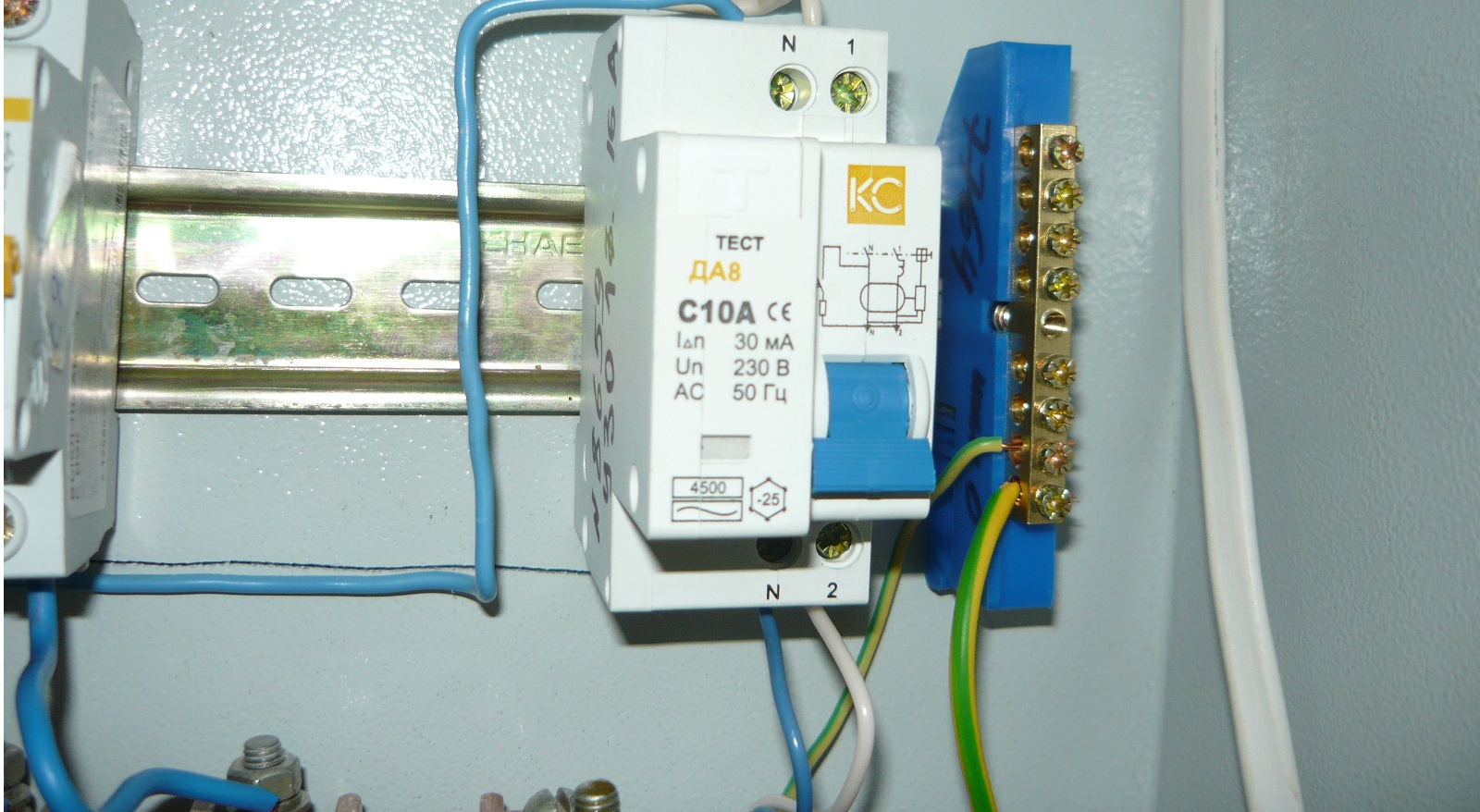
- prepare some cement mortar;
- fill the holes for the sockets about a third with cement, install plastic socket boxes on top (plaster can be used instead of mortar);
- secure the wiring to the wall;
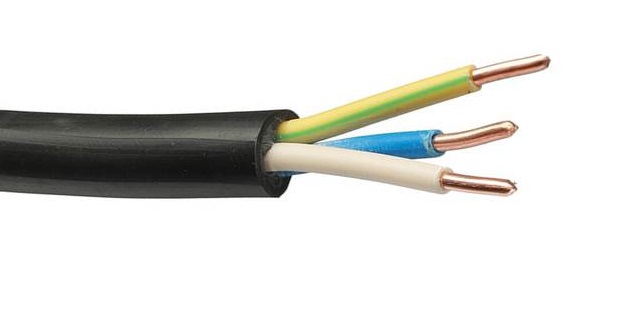
- lead the cores of each cable into “its own” socket box;
- fix the “insides” of the sockets in the socket box (note that the cement mortar should dry by this moment and “grab” the structure);
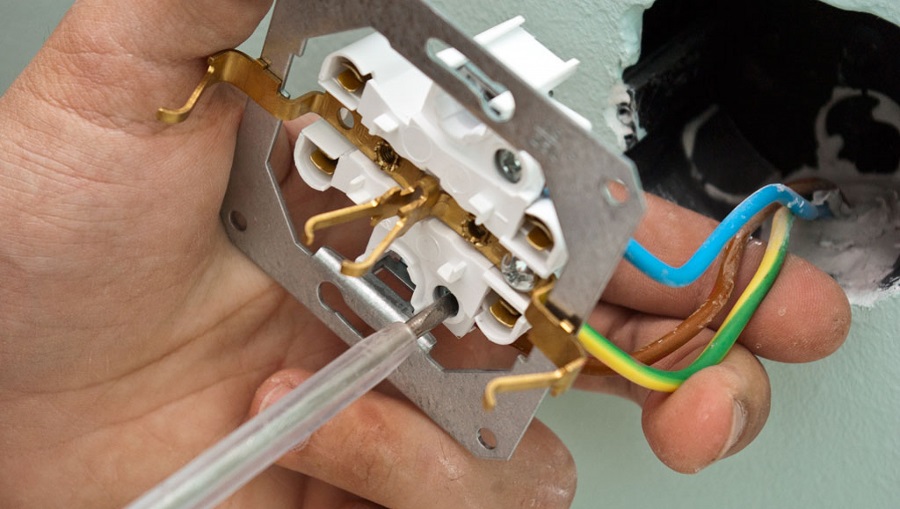
- connect the cable cores to the contacts of the sockets;
- install the outer part of the sockets.
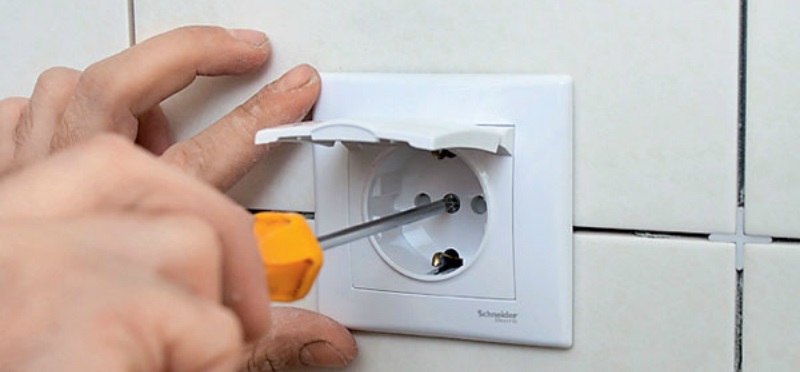
Next you need to check how the made sockets work.Connect any household appliance to them. If all is well, you can close the grooves in the walls.
If you don’t want to ditch the walls, you can organize external wiring and cover it with special plastic boxes. However, this option is undesirable when laying the cable in a room with high humidity.
Tips for installing machines in a column
When deciding to install a dryer on a washing machine, you should consider a number of nuances. Particular attention must be paid to fastening the column instruments. The equipment vibrates during operation, so the clamps must be reliable.
Experts recommend:
- pre-calculate whether the wall can withstand such a load. If this is a plasterboard partition, then attaching equipment to it is dangerous;
- do not use fasteners of dubious quality;
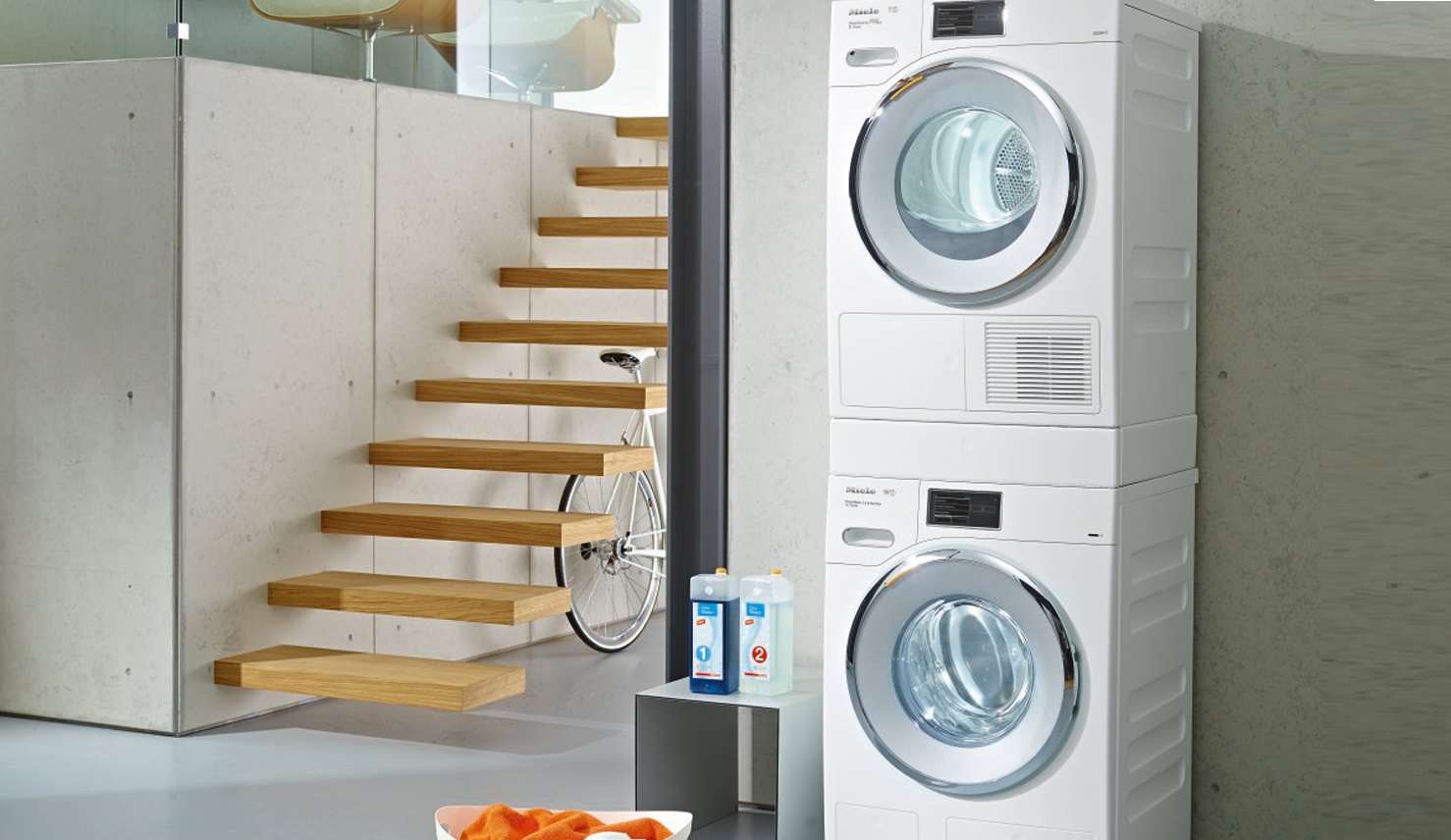
- do not turn on the washing machine and dryer at the same time, otherwise strong vibrations of the appliances may loosen the fastenings;
- install the units at a short distance from the wall, since the devices vibrate quite strongly during operation;
- buy equipment of the same size. It is impossible for the washing machine to be narrower than the dryer;
- purchase washing machines from one manufacturer, this will create a harmonious column.
When forming a column, remember that the washing machine is always placed below, and not vice versa.
A washing machine weighs significantly more than a dryer. It also vibrates more during operation. Therefore, it is always placed at the bottom.
If possible, it is better to entrust the installation of the column to specialists. The craftsmen will quickly and competently arrange the devices and fix them securely. When installing it yourself, be sure to follow the instructions and do not neglect the recommendations.
Interesting:
1 reader comment

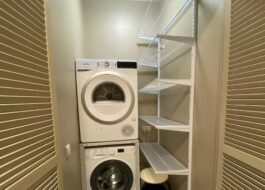
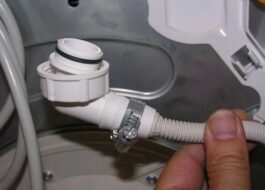
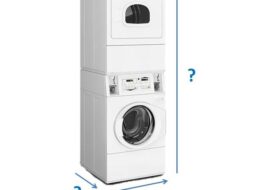
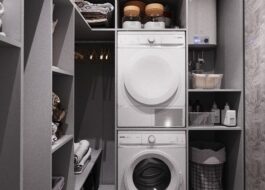
















Good article, thank you. However, there is still no clear answer where to install sockets? The washing machine is below, the socket for it is 20cm higher, but the dryer has already started there. Is this normal? For the dryer, the socket is also 20cm higher than its top edge. Either placing both sockets on the right or left is an ideal option. And I would like to know the length of the wire with the plug. Is there some kind of standard there?